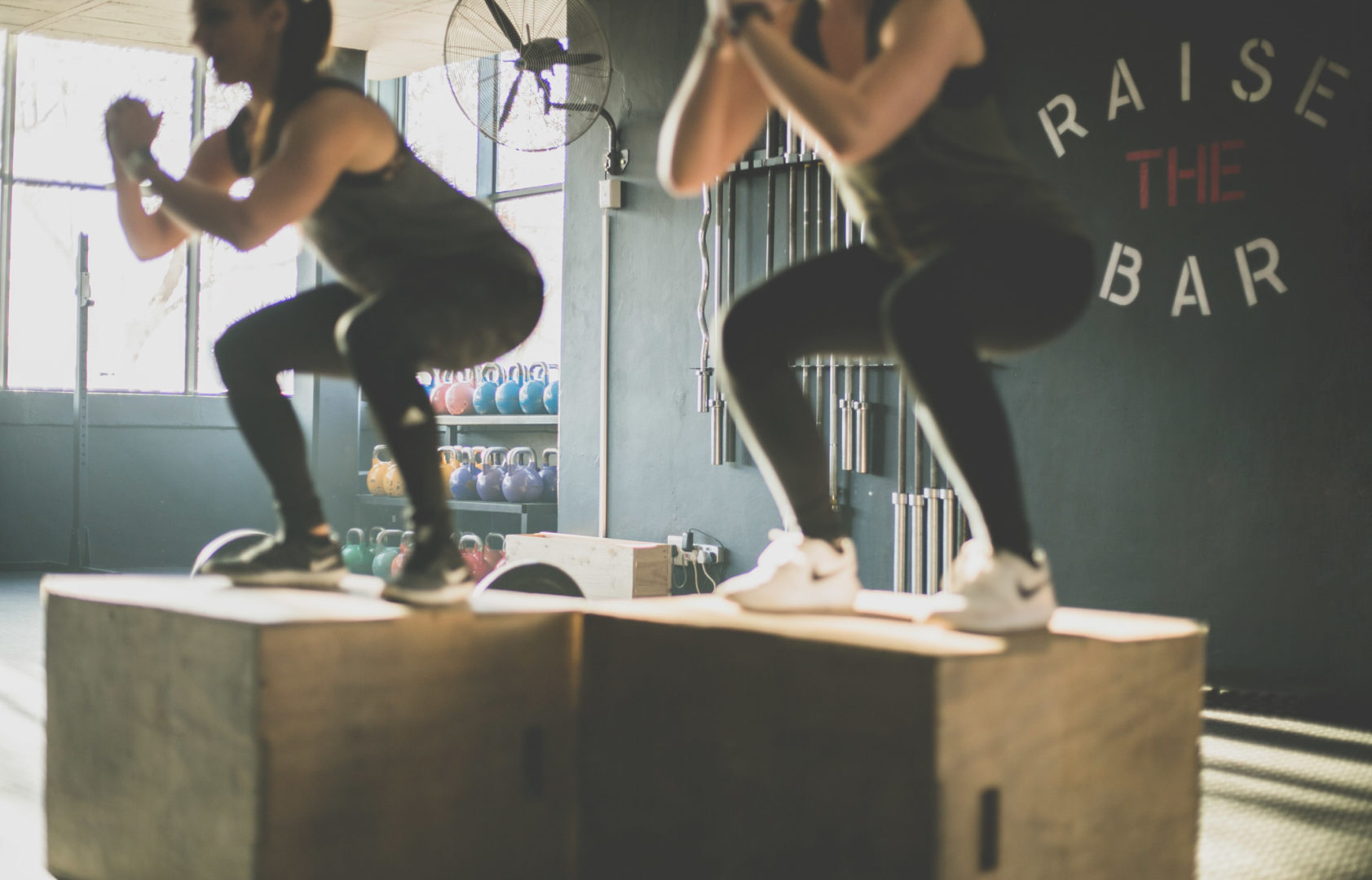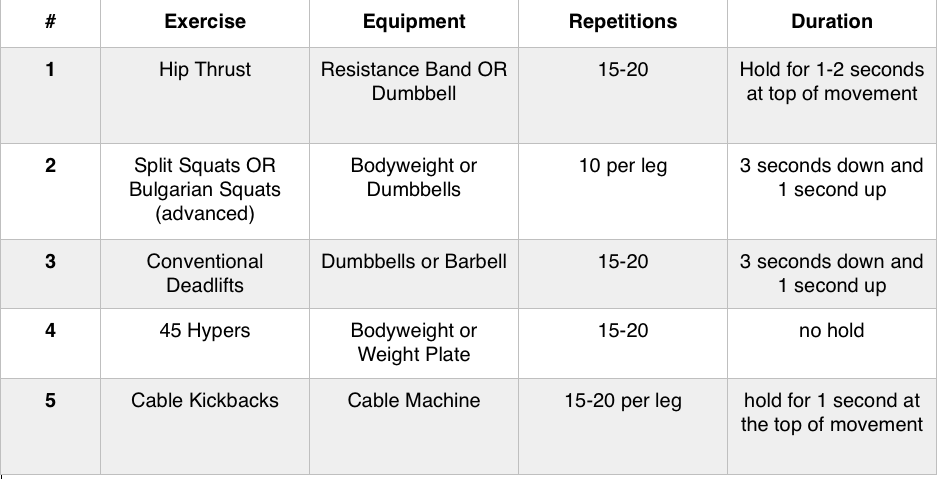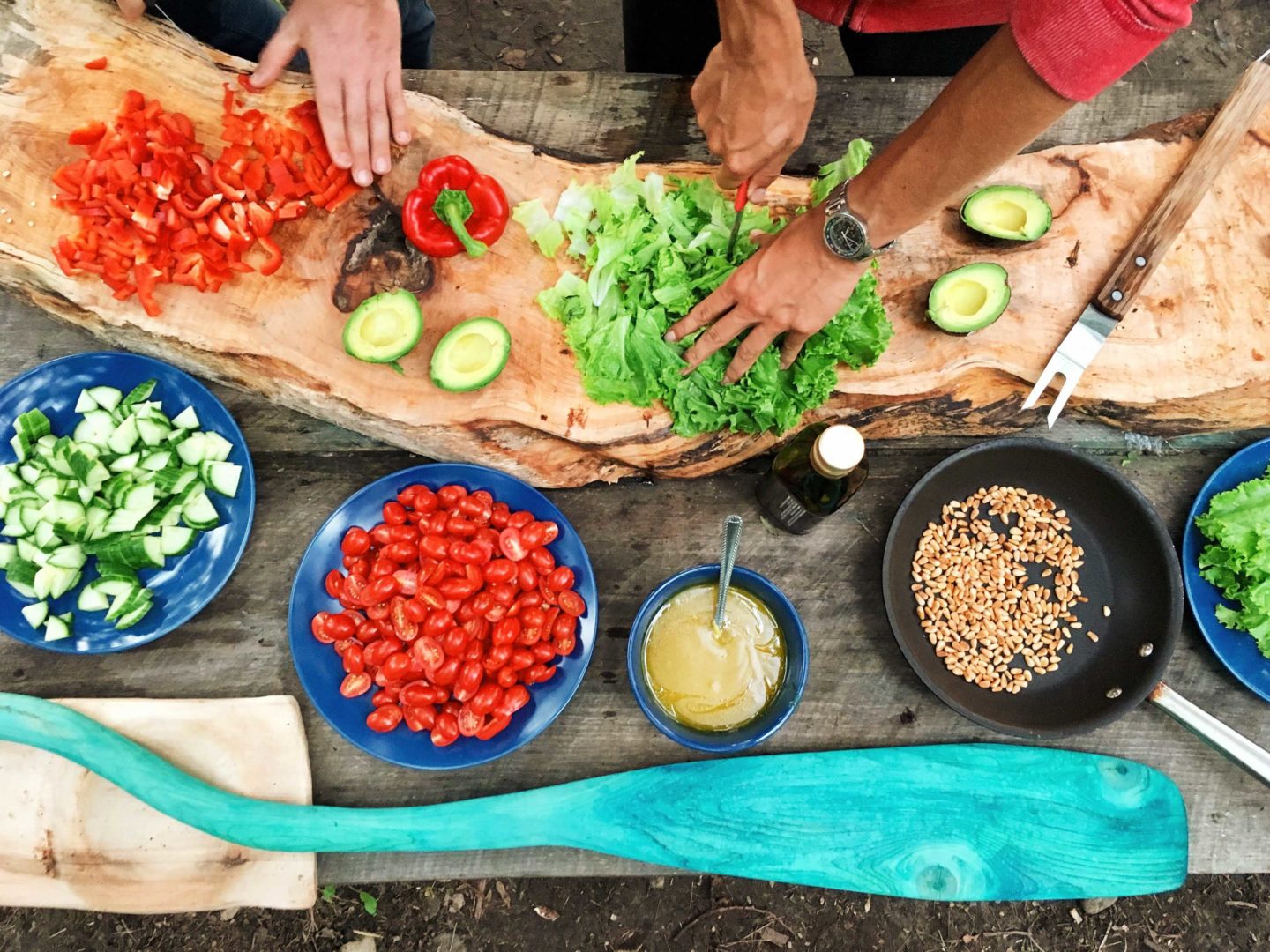
If we look back in time, the 80’s were all about low fat diets, the 90’s were all about washboard abs, the 2000’s were about low carb diets, and the 2010’s? It’s all about the booty now!
Aside from the aesthetics of a nice derriere, having strong glutes is important for your structural health. They say that in the ancient days, those who had strong glutes were more likely to survive. The reason for this is that strong glutes not only help you to run faster, but they protect your back by being able to carry more weight/heavier loads.
Regardless of your WHY, there’s a good chance you’ve sought to increase your glute size and strength. Whether it’s to increase your performance in a sport, become a better runner, alleviate back pain, or just look better naked, training glutes is essential!
Here are our top 5 exercises to get those glute gains!
We recommend that you perform these exercises 2 times per week, circuit style. This means you’ll do 1 set of each with about 1 minute rest in between sets. Rest 2 minutes before repeating the circuit. You can perform this circuit 2-3 times.
Within 4 weeks, you’ll definitely notice gravity’s shift!

Here’s how to Perform Each Exercise
HIP THRUSTS:
For this movement, you’ll need a regular bench secured against a wall so that it doesn’t move. You’ll set up by sitting on the floor in front of the bench with your feet flat on the floor in front of you and your back against the bench, just underneath your shoulder blades. Place a dumbbell on your hip bones or if you’re using a hip thruster, you can set up a resistance band across your hips as well. To begin the movement, keep your chin tucked, ribs down, and press through your heels to engage your glutes. As you press through the movement, roll the dumbbell down to the top of your thighs (for comfort), keep your knees out and drive through the glutes and hamstrings until your hips are level with your knees and shoulders. Hold for 1-2 seconds and then lower back down to the floor. You’ll want to make sure that your knees are at about a 90 degree angle when you’re at the top of the movement.
SPLIT SQUATS:
Begin with your left foot forward facing straight ahead and your right foot behind you with your right toe on the ground. Bring your hands together at your chest or if you’re holding dumbbells, hold them at your sides. Make sure you tighten your core and glutes throughout the whole movement. Be sure to keep a soft bend in both knees and a neutral spine as you begin to lower your right knee straight down towards the floor slowly. When your right knee reaches the ground, maintain a tight core and squeezed glutes as you press through your left leg to come back to the top of the movement.
CONVENTIONAL DEADLIFTS:
Grab a barbell or dumbbells and stand up straight with your feet shoulder width apart. From here, you’ll ensure that your body is nice and tight. Check that your lower back is neutral or slightly arched, your core is tight, your shoulders are back and down, chest is out and you are looking straight ahead. Your upper body should be in a tight position before starting the movement. Once you’ve stabilized yourself, you’ll slowly push your hips back as you lower the barbell just below your knees OR until your hamstrings are stretched tightly. From here, continue keep a tight upper body as you press through your heels to stand back up straight, engaging your hamstrings and glutes. It’s important to keep your shoulders back as you lower down towards the floor. It helps some to imagine that there is a rope around your waist with someone pulling your hips straight back. That’s what the deadlift movement should feel like.
45 HYPERS:
Set the 45 hyper machine up so that you are able to fully bend at your hips until your upper torso is completely vertical towards the floor. Place your feet on the platform with your toes angled slightly out. From here, cross your hands over your chest, tuck your chin and round your upper back. This helps to take your lower back out of the movement. From the bottom of the movement, squeeze your glutes and imagine pulling yourself up using just your glutes and hamstrings. You’ll want to come up only as far as your feeling it in your glutes, but not so far that your lower back begins to take over the movement. See the photos below to get a good idea of how high your torso should come up. When you’ve reached the top of the movement, lower yourself back down and repeat.
CABLE KICKBACKS:
You’ll need to start by finding a strap that you can wrap around your ankle. Place the cable system at the bottom setting so that you’re able to securely wrap your ankle with the strap. From here, stand up straight keeping your core tight and holding on to the cable system to stabilize your body. Keep your non-working leg straight and your working leg with a soft bend in the knee. From here, lead with your heel as you kick your leg straight back behind you. Make sure to not let your back bend. If this is happening, you’re likely kicking up too high. Only kick up as high as your glutes are staying engaged and your lower back is not taking over the movement. See photos to get a good idea of how high your leg should go up, although flexibility differences may alter this height.

